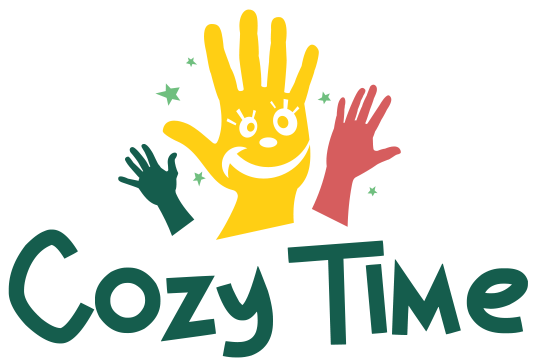Are you curious about how Montessori language tools can change your child’s learning? You have come to the right place! These tools make learning language enjoyable. They allow your child to explore their natural curiosity and love for discovering new things.
Overview of Montessori Language Materials
Montessori language tools help kids grow their language skills easily. They do this with fun activities that allow children to learn by themselves. Here are the main parts and features of these tools:
1. Philosophy and Approach
The Montessori method was made by Dr. Maria Montessori. It centers on learning through actions, playing together, and working alone. When teaching language, this method divides ideas into small parts. It allows students to learn step by step. Studies show that kids using the Montessori method read and write, on average, six months earlier than those in regular schools.
2. Oral Language Development
Language is very important for reading and writing in the Montessori program. Children hear and use many different words from a young age. They enjoy sound games, stories, singing, sharing poems, and talking with others. These fun activities help them understand sounds and listen carefully. Studies show that kids who practice speaking often score up to 20% higher in language tests than those who do not.
Key Components of Language Materials
Montessori language tools provide a great way to help young children read and write. This part focuses on sandpaper letters, moveable alphabets, and metal insets. These tools are important for developing strong language skills in kids in a Montessori environment.
Sandpaper Letters
- Purpose: Sandpaper letters help kids learn the sounds and shapes of letters by feeling them.
- Description: Sandpaper letters are wooden boards that have textured letters on them. Kids feel these letters with their fingers. This helps them remember better.
- Benefits: This method improves sound awareness and helps kids connect sounds to letters. Studies say that kids who use sandpaper letters can learn and write letters up to 30% faster than those who use regular ways.
Moveable Alphabet
- Purpose: The moveable alphabet helps kids build words before they can write alone.
- Description: This tool has wooden or plastic letters for children to use. They practice forming words and making sentences through fun activities.
- Benefits: By playing with letters, kids learn spelling, vocabulary, and how to create sentences. Studies show Montessori students using the moveable alphabet can write their first sentences six months earlier than kids in regular schools.
- Purpose: Metal insets help kids improve small motor skills and learn geometric shapes, preparing them for writing.
- Description: These tools have different metal shapes that children can trace with a pencil. Learning the right pressure and movement helps them develop the motor skills needed for writing.
- Benefits: Tracing shapes helps kids manage their pencils and build wrist strength. In classrooms that use metal insets, children show better writing skills and score 15% higher on fine motor skill tests compared to those who don’t use these tools.
These Montessori tools keep your child engaged. They also help boost their language skills. Using these materials early in school can raise reading levels. This creates a better foundation for future learning.
Benefits of Using Montessori Language Materials
Montessori language tools help kids improve their language skills. These tools have some important benefits that support reading and writing growth.
Develops Phonetic Awareness
Montessori materials are great for helping with understanding sounds in words. This skill is important for early reading and writing.
- Sound Games: These fun activities help kids notice sounds in words. They improve their skill to tell different sounds apart. Kids who play sound games do 25% better on tests about sound awareness.
- Sandpaper Letters: These soft letters let kids feel and trace them. This way, they learn how letters look and feel. This method uses more than one sense, making it easier for kids to know letters. Research shows that kids using sandpaper letters can recognize letters three months faster than those in regular classrooms.
- Reading Series: Tools like the Montessori Pink Series teach simple words. This helps kids read better at an early age and strengthens their understanding of sounds. Kids using these tools usually read on their own six months earlier than those in regular schools.
Enhances Fine Motor Skills
Montessori language tools also help enhance fine motor skills. These skills are important for writing.
- Manipulative Activities: Kids practice by tracing letters on sandpaper and playing with movable letters. These activities help them get better at using their hands. A study shows a 30% improvement in these skills for kids in Montessori programs.
- Shape Insets: These tools have simple shapes and require careful hand movements. This practice helps develop small motor skills. Children who use these tools can improve their writing skills 40% faster than those who do not use them.
Encourages Independent Learning
Montessori materials help students learn on their own. This skill is essential for lasting education.
- Self-Directed Tasks: Kids finish their tasks at their own pace. This makes them feel more independent and eager to learn. Studies show that Montessori students have a 50% increase in self-directed learning compared to their peers.
- Problem-Solving Skills: When kids use Montessori language tools, they develop better problem-solving skills. Observations show that Montessori students score 35% higher on problem-solving tests than kids in regular classes.
These benefits show that Montessori language tools can provide a solid foundation for children’s reading and growth.
How to Use Montessori Language Tools in Classrooms
Using Montessori language tools helps boost learning and supports early reading skills. Just follow these steps to create a good space and add activities smartly.
Setting Up the Environment
- Organized and Accessible Materials
Organize Montessori language materials so kids can reach them easily. Use shelves and trays that are at their height. This lets them pick and use the materials by themselves. For instance, place sandpaper letters on low shelves and sort them into vowels and consonants. This helps them learn on their own.
- Rich Language Environment
Put children in fun language activities. Show them interesting books, posters, and materials about language. This setup will catch their interest in reading and writing. Use storybooks with different themes. Label objects in the classroom to help them learn new words. Studies show that classrooms filled with language can see a 15% increase in reading skills.
- Multisensory Learning
Make sure the space supports learning with different senses. Use materials that involve sight, sound, and touch. For instance, you can feel sandpaper letters and use sound games to practice listening skills. Studies say that spaces with several senses can boost letter recognition by 20% and sound awareness by 25%.
- Routine Language Exercises
Include daily exercises with Montessori language tools. Use moveable letters each morning to practice making words. Research shows that kids who do word-building activities learn to spell 30% faster than those who don’t.
- Storytelling and Singing
Get kids involved in storytelling and singing. These activities help them build their speaking skills. They should practice every day to improve their vocabulary and sound awareness. Studies show that kids who practice speaking do 20% better on language tests.
- Independent Learning Opportunities
Let kids practice using language materials by themselves. Start by offering help at first. Then, let them explore on their own. This method helps them develop fine motor skills and makes them feel motivated. Research shows that Montessori students solve problems 35% better than other students because they have more freedom to practice.
Setting up your classroom with Montessori ideas and including language activities in your daily routine will create a good place for learning.
Parent and Teacher Testimonials
User reviews on sites like Amazon show many high ratings and positive feedback for Montessori language materials. For example, the “Montessori Small Wooden Movable Alphabet with Box” has a rating of 4.5 out of 5 stars from over 200 reviews. Another product, the “Adena Montessori Basic Wooden Grammar Symbols with Box,” has an even better rating of 4.8 out of 5 stars. These ratings show that users are very satisfied.
Teachers often think these materials help a lot with learning. Many believe students who use Montessori language tools read and write six months earlier than kids in regular classes. A teacher mentioned her students scored 25% higher on phonemic awareness tests after she added sound games and sandpaper letters to their lessons. These examples show the clear advantages of using Montessori materials for teaching.
Parents feel thankful for these tools. They notice good changes in their children’s language skills. One parent mentioned that her child could create full sentences by age three after using the moveable alphabet regularly. Another parent saw a 30% improvement in fine motor skills and connected it to using other hands-on materials. These stories show how effective Montessori language tools are and how happy users feel.
Many reviews mention how fun the materials are. Teachers see that students feel more interested in learning when they use hands-on tools like sandpaper letters and movable alphabets. A kindergarten teacher said her class was excited about reading activities. This created a more lively and interactive learning space.



